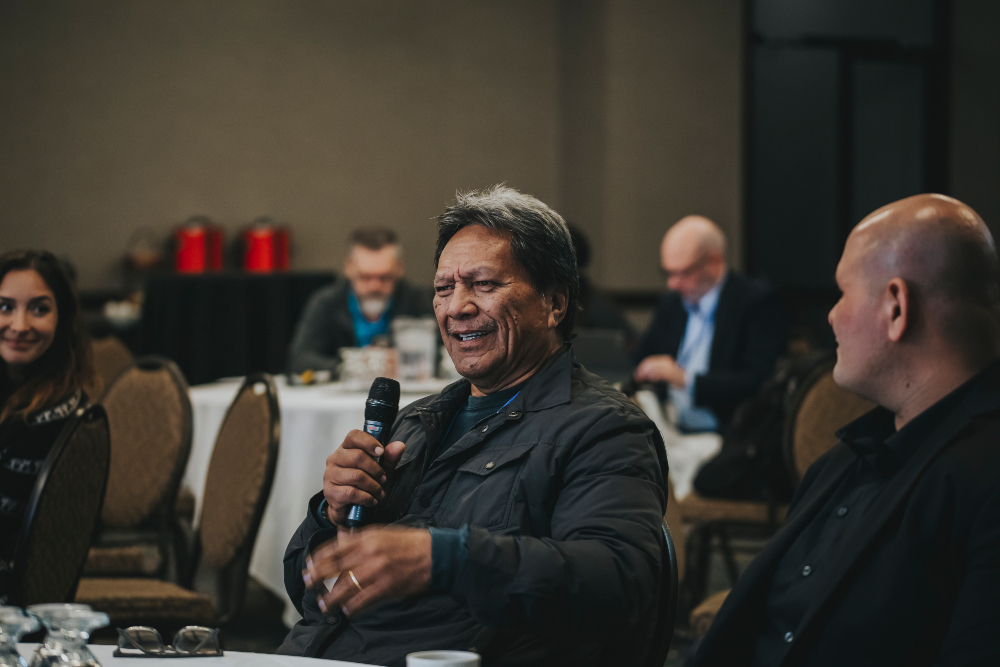
- Details
- By Chez Oxendine
- Economic Development
Money alone won't solve Indian Country's broadband issues. Even with unprecedented funding levels and heightened federal interest in bridging the digital divide in Indian Country, implementing sustainable solutions remains problematic.
That’s according to feedback gathered from participants at May’s Indigenous Connectivity Summit, hosted in Anchorage by broadband nonprofit Connect Humanity’s Indigenous Connectivity Institute (ICI). The summit, which brings together Indigenous leaders, network operators, policymakers, and other stakeholders, aims to improve access to affordable and sustainable internet for Indigenous communities in Canada and the United States.
“More funding for broadband expansion is certainly essential, but how this money is spent is equally important,” Mark Buell, director of Indigenous programs for Connect Humanity Director, said during the May conference. “To meet this moment, policymakers and regulators in the US and Canada must build relationships that respect the rights of Indigenous Peoples that are enshrined in land claims and treaties, and domestic and international law.”
To that end, surveys gathered during the event have been used to produce several “Calls to Action” that build on recommendations endorsed in 2022 on critical issues surrounding telecommunications policy, funding, affordability, access to spectrum, and capacity building.
The 2023 calls are centered around breaking down barriers to funding as well as shared decision-making and co-management by tribal sovereign nations and the federal governments of the U.S. and Canada. The proposed calls to action target everything from training government agencies on tribal sovereignty and cultural competency to striking down onerous requirements for grant funding.
“Telecommunications policy and funding program frameworks in Canada and the United States are failing Indigenous Peoples. Consultation processes do not respect the rights of Indigenous Peoples, are not structured in a way that is inclusive, and do not ensure meaningful participation by Indigenous Peoples,” the ICI writes. “Funding program criteria effectively exclude Indigenous communities from developing networks to serve their own people.”
Proposals laid out in the document rest on a central pillar: a proposed dedicated agency meant to organize and coordinate inter-office efforts in both the Canadian and US governments. Such an office could support efforts to place tribes at the decision-making table from the outset.
Specifically, the group asks government organizations to use money raised from spectrum auctions to fund an Indigenous Office of Telecommunications Policy in both Canada and the United States. If implemented, the ICI writes, the office would have a say in spectrum allocation, federal funding, and policy development.
Such an office would “enable” many of the other proposed Calls to Action, such as cultural competency training. As an example, the ICI points to developing timelines for consultation and grantmaking around traditional and cultural practices, such as ceremonial or harvest seasons. Intersections between funding opportunities, consultation periods, and traditional obligations can often mean tribes have insufficient time to take full advantage of those chances, per the Call to Action document.
An Indigenous Office of Telecommunications could also help with intra-agency training on everything from cultural sensitivity to understanding tribal budgets, land laws, and existing barriers to funding. The same office could also help ensure Indigenous people end up in decision making positions - a consequence of developing workforce and capacity-building programs, another Call to Action listed in the document.
The document breaks off an entire section on the Broadband Equality, Access, and Deployment program in the United States, which allocated $42.5 billion across all 50 states and US territories to support broadband infrastructure development in early July. The program has faced criticism for relying on state governments to play ball with tribes, rather than providing set asides or definite paths to funding for Native communities.
The ICI document points to issues well before the money ever arrived in states’ coffers, however, pointing in particular to a requirement that BEAD-funded awardees provide letters of credit attesting to their financial viability throughout the infrastructure buildout. Given Indian Country’s dismal history with access to credit, this places BEAD funding beyond the reach of many Native American-owned service providers, thereby impacting tribal sovereignty over emerging networks, the ICI writes.
“A process to include Tribal input needs to be developed at the earliest possible time to ensure Tribal communities benefit fully from the program,” the document reads. “..we [also] call on the National Telecommunications and Information Administration (NTIA) to offer alternatives to the Letter of Credit Requirement.”
In the same vein, the ICI calls for continuing existing funding programs, such as the Tribal Broadband Connectivity Program, the Affordable Connectivity Plan, and BEAD, as well as building new ones. In particular, the organization calls for an operating fund meant to support emerging Indigenous-owned networks.
Finally, the ICI calls for allocated wireless spectrum dedicated to Indigenous use at no cost - another crucial component in constructing last mile networks to reach rural Native communities.
